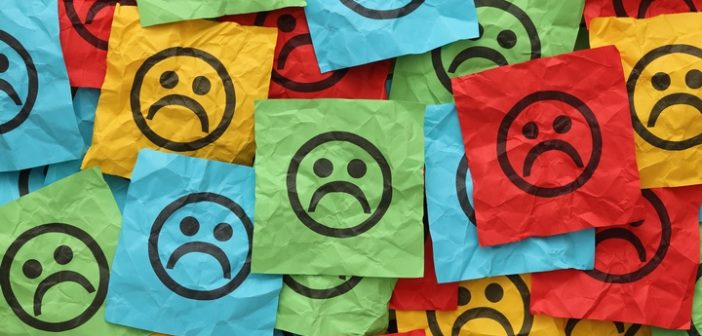Different colors can have a direct impact on our emotions. This is called color psychology. Color psychology is the study of colors in relation to human behaviour. It looks to determine how color affects human decisions in our everyday lives. It’s based on the mental and emotional effects color has on people. While some of color psychology is subjective, there are some more accepted and proven elements.
Do you ever notice that you feel happier in some places in your home and sadder in other places? Did you paint your interior bedroom a certain color because of how it makes you feel? Did you opt for colors that make you feel calm, relaxed, and soothed? This is all part of color psychology and great examples of how happy and sad colors affect our moods.
The way different sad colors affect emotions depends on a variety of factors including a color’s brightness, tint, tone, shade, and whether the color is cool or warm-toned.
Warm-toned colors evoke feelings of happiness, optimism, and energy so they are more closely linked with positive emotions. Cool colors on the other hand, like purple, blue, and green, can evoke feelings of sadness and are more closely linked with negative feelings. Depressing colors that are dark and muted, like black and grey, for example, also evoke feelings of sadness. Neutral colors like brown and beige can also have this effect on emotions.
We will explore seven sad colors in greater detail. If you want a happier home environment, avoid painting your house in these sad colors:
1. Black Colors
Black is the hallmark color of sadness. In western cultures, this is one of the sad colors associated with mourning, hence why people wear black to funerals and when they are in mourning. Black also brings up feelings of sadness and fear.
Black can make us feel intimidated and unapproachable since it’s closely linked with authority and power. Villains, like Dracula, for example, wear black because it makes them seem evil. Black is definitely the saddest of all colors.
2. Blue Colors
Although lighter shades of blue are associated with producing feelings of calmness and spirituality, darker shades of blue, as well as too much of the color blue, can create a cold, disengaged feeling. Blue, or too much blue, can also come across as cold, uncaring, and can dampen spirits.
Known as one of the sad colors, blue also creates negative feelings, feelings of melancholy, sadness, self-righteousness, and self-centeredness. Too little blue can also create negative feelings and evokes suspicion, depression, stubbornness, timidity, and unreliability. After all, don’t we say we’re “feeling blue” when we’re sad?
3. Gray Colors
Gray is a dull, moody, and sad color that affects the mind and body by causing unsettling feelings. Too much gray creates feelings of sadness and depression. It also evokes feelings of loneliness and isolation.
Since gray is neither black nor white, it’s usually thought of as the transition between two non-colors. The closer to black gray gets, the more mysterious and dramatic the color becomes. Gray is also considered an unemotional color and can make you feel detached or neutral.
4. Green Colors
Green is one of those sad colors that psychologically affects us in many different ways. Green can be soothing and relaxing. It can also help alleviate feelings of anxiety, depression, and nervousness.
However, too much green can cause us to become lazy, placid, moody, slow, depressed, and even lethargic. Too little green can cause feelings of apathy and fear of rejection.
5. Purple Colors
Purple also has a wide variety of effects on us psychologically. On the one hand, purple is associated with feelings of spirituality, fulfilment, calmness, and increases nurturing tendencies and sensitivity, and encourages creativity and imagination.
However, different shades of purple create different emotions. Dark purple produces feelings of sadness, gloom, and even frustration. It’s said that too much purple can produce feelings of irritability, impatience, and arrogance. Too little of the color purple produces feelings of powerlessness, negativity, and apathy.
6. Beige Colors
Beige is a neutral color. Neutral colors can sometimes be drab and evoke feelings of sadness, gloom, and even boredom. Beige is usually used as a background color and doesn’t usually take the spotlight due to its neutrality.
Although one can argue that beige is a neutral color and therefore doesn’t affect us, it’s still believed that too much beige can bring about negative feelings.
7. Brown Colors
Brown can sometimes be sad and wistful and evoke feelings of loneliness, sadness, and isolation. This has to do with the color having a darker tone and darker tones being more closely linked to sadness.
So, now that you know a bit more about color psychology and which colors tend to make us feel sadder, you know which colors (or shades of colors) to choose when repainting a room in your home. Think about how each color and shade makes you feel and opt for one that makes you feel happy, calm, and soothed.




